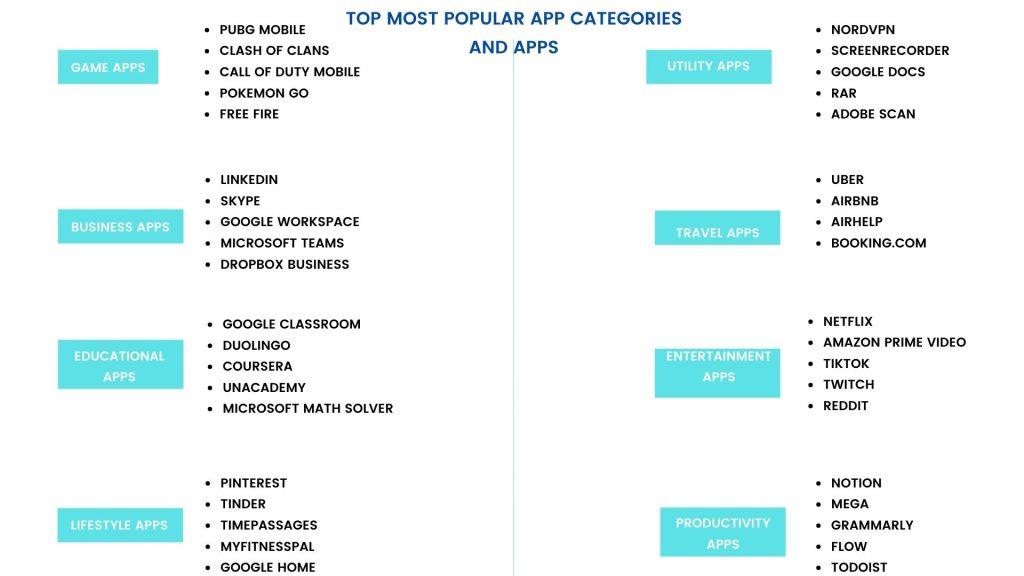BLOG
How to Build a Mobile App for Your Business?
Mobile apps are projected to generate more than 613 billion U.S. dollars in revenues in 2025. In 2020, global revenue from mobile apps increased to over 318 billion U.S. dollars (Source: Statista).
These are some statistics you and your business cannot afford to ignore. It comes down to how a mobile application can bring huge returns to your business.
We understand that it can be a daunting process to build a mobile app from scratch, especially for some non-technical folks.
But don’t worry, we’re here to help.
We’ve put together this article to help you lay the groundwork for your mobile app. We’ll go over everything from planning to prototyping to marketing your new app.
In this article, we’ll outline the steps you need to take to lay a strong foundation for your mobile app.
Prepare a Solid App Business Plan
“By failing to prepare, you are preparing to fail.” – Benjamin Franklin
To successfully build a mobile app, you will need a stellar UI design with sales/marketing funnels which makes your user’s life easier and can increase your business revenue. Planning specifics comes first when it comes to mobile application development.
Unlike a traditional business plan, you shouldn’t necessarily write a detailed plan. You can keep it super simple with one page flexible plan everyone understands.
The easiest way to achieve this is by filling a Business Model Canvas (BMC) template.

BMC gives you a high-level view to take business-critical decisions before starting or scaling your app business journey. Whether you are a small startup or an enterprise, it brings all the stakeholders on the same page.
Once you ideate your dream app, organize those ideas into the Business Model Canvas (BMC).
It gives you clarity about your potential market, target audience, value proposition, app platform (iOS, Android, web app), monetization strategy, etc.
Define Roles
Deciding to build a mobile app for your business will impact every other decision you make, so it’s important to get it right.
It’s not only a major investment in time and money but also an extra effort to give your business a competitive edge.
So, how do you decide which role to play in the development process?
First, you need to define—are you going to own and operate the app? Or are you leading the project management team?
Let’s say, you’re a tech-savvy person who is capable of building an app. In that case, you can start gathering the rest of your team. You’ll need a developer, a designer, and a marketer.
However, if you’re not technical, you’ll need to find a development partner who can help you build the app. But remember, you’ll still need to be actively involved in the process. You’ll need to provide feedback on designs, approve budgets and make decisions about features and functionality.
No matter what role you play in the mobile app development process, remember that the most important thing is to stay focused on your goals and make sure your app meets the needs of your customers. With the right team in place, your mobile app business can thrive.

Mobile App Prototyping
Creating wireframes and prototypes is an effective way to communicate design ideas and test usability. Prototyping helps make decisions about the app’s functionality and interaction early on in the design process, before even starting the development.
It allows mobile app developers to review the app flow, get feedback and improvise. This translates into faster app development and a better user experience.
You also need to make sure that you are designing for both iOS and Android devices. To make sure that your design is accurate, you may want to consider using a prototyping tool. This will help you to create a prototype that is as close to the final product as possible.
It’s important to get the design right from the start to ensure a smooth and successful launch. That’s why at Techspian, we always recommend our clients go through the prototyping process.

Pre-Launch App Marketing
As a business owner, one of your top priorities should be marketing your app. However, you might think it’s too early to think about app marketing before you’ve even begun your development.
To get started, you need to define your branding. This means designing a logo, determining your colors, and developing a brand story.
Once you have this in place, you can start finding your channels. This includes identifying where your target audience hangs out online and offline, and what kind of content they would be most interested in.
Once you have all of this in place, it’s time to start putting together your pre-launch marketing campaign. This will include creating teaser videos, developing website landing pages, and drafting emails to send to your subscribers. By starting early, you’ll be able to create a lot of buzz and anticipation for your app before it’s even available.
Final Thoughts
In this article, we’ve outlined the basics of what you need to know to get started.
First and foremost, mobile app development is no joke; it has more hurdles than web development. If you want to develop your custom mobile application for any device, then you’ll need to go through the process of designing, coding, and deploying it.
This can be a daunting task if you’re not familiar with the process.
At Techspian, we understand these challenges and are here to help. We provide our clients with the option for us to help develop their mobile applications in-house. Our experienced app developers will work round the clock to build your app and will create an app that fits your imagination.
If you have any questions, be sure to reach out to us at info@techspian.com
Related Topics
Trending Topics
Want to build Super app for your business?



